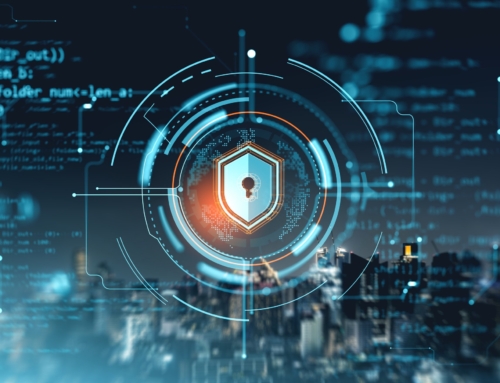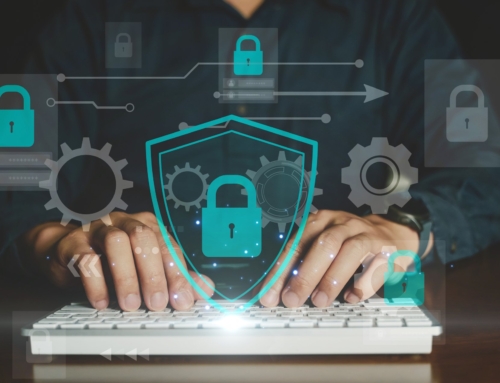Steps to Data Recovery Post-Ransomware
Understanding the Ransomware Threat: Setting the Scene for Data Recovery
Data recovery post-ransomware has become an increasingly critical operation for businesses of all sizes. As ransomware attacks continue to surge, the ability to recover compromised data swiftly dictates our resilience and continuity. Acknowledging the severity of this escalating menace is the first step towards formulating a robust defensive strategy. Ransomware doesn’t merely inconvenience—it can paralyze entire organizations, yielding financial losses and tarnishing reputations. We believe in empowering our clients by instilling an understanding of the threat landscape, which lays the groundwork for an effective data recovery plan post-ransomware attack.
The Rising Tide of Ransomware Attacks and Their Impact on Businesses
Ransomware, a type of malware that encrypts files and demands payment for their release, has seen a dramatic uptick in prevalence. We have observed that these attacks are growing not only in frequency but also in sophistication, targeting sectors from healthcare to financial services. The repercussions for businesses are profound, including operational downtimes, data loss, and exposure of sensitive information. Therefore, our approach to IT management and advanced network services encompasses proactive measures and tailored solutions that address these evolving threats.
The Importance of Having a Solid Data Recovery Post-Ransomware Plan
In the unsettling event of a ransomware incursion, having a data recovery post-ransomware plan is indispensable. Such a plan serves as a lifeline, enabling businesses to restore critical data without succumbing to cybercriminal demands. Our commitment is to our clients’ business continuity, which is why we prioritize the development and implementation of comprehensive data recovery strategies. These contingencies ensure minimal downtime and uphold the integrity of vital data, reinforcing the overall security posture of the organizations we serve.
Preliminary Measures to Consider Before Delving into the Recovery Process
Before embarking on the data recovery post-ransomware journey, it is essential to establish precautionary steps to mitigate risk. We champion a multifaceted approach, which includes employee education, rigorous cybersecurity practices, and regular data backups. By conducting regular diagnostics and network assessments, we ensure our clients are fortified against the initial brunt of ransomware. Should an attack bypass these defenses, these preparations pave the way for a smoother, more efficient recovery operation.
Our ethos at Alvaka revolves around delivering steadfast support and tailored network solutions that enable clients to confront the ransomware menace with confidence. We fuse our expertise in IT management with cutting-edge security practices to offer a well-rounded defense mechanism against this digital scourge. The importance of preparation and proactivity cannot be overstated, and that’s why we work tirelessly to equip businesses with the tools and insights necessary for successful data recovery, should they fall victim to a ransomware attack.
Initial Response to a Ransomware Attack: Immediate Steps
Isolation and Containment to Prevent Further Spread
We understand the urgency of responding swiftly to a ransomware attack. Our primary step, consequently, involves the immediate isolation of infected systems. By severing connections both to the internet and internal networks, we aim to contain the infection and prevent its propagation. This decisive move is crucial to minimize the attack’s impact on the broader network infrastructure.
Identifying the Variant of Ransomware and Analyzing the Attack Vector
Once containment is achieved, our team diligently works to identify the ransomware variant responsible for the attack. Ascertaining the specific type of malware is pivotal in formulating an effective response strategy. Simultaneously, we analyze the attack vector to understand the breach points and implement stronger defenses moving forward.
Reporting the Incident to Relevant Authorities and Stakeholders
We adhere to a strict protocol involving the notification of pertinent authorities and stakeholders. It’s our responsibility to ensure transparency and maintain communication with those affected, including reporting the incident to law enforcement and data protection agencies to assist in broader efforts against cybercrime.
Assessing and Analyzing the Damage: Before Jumping into Data Recovery
Determining the Scope and Severity of Data Encryption or Corruption
Tackling a ransomware attack involves an in-depth assessment of the inflicted damage. We meticulously ascertain the extent of data encryption or corruption, which enables us to prioritize recovery efforts effectively and to set realistic expectations for the recovery process.
Evaluating Existing Backups and Their Integrity in the Data Recovery Post-Ransomware Process
Backups play a fundamental role in the data recovery post-ransomware process. We rigorously evaluate the existing backups for their integrity and viability. This ensures that our recovery efforts are grounded on a solid foundation, and it contributes significantly to a successful restoration of services.
Engaging with IT Management and Advanced Network Services Professionals for Assessment
Enlisting the expertise of IT management and advanced network services professionals is integral to our assessment. These specialists bring a wealth of knowledge and experience to the table, facilitating an accurate diagnosis of the attack’s impact, and helping to define the most effective recovery path.
Executing a Careful Data Recovery Post-Ransomware
Prioritizing the Restoration
In the execution phase, we prioritize the recovery of operational and mission-critical data to resume business functions with minimal downtime. It’s crucial to balance speed with precision, ensuring that restored systems are not vulnerable to further attacks. Our judicious approach to data recovery post-ransomware lays the groundwork for business continuity in the wake of cyber disruptions.
- Conducting a thorough restoration from verified backups, ensuring all recovered data is clean and uninfected.
- Implementing continuous monitoring protocols to detect any abnormalities post-restoration.
- Working closely with clients to update and refine their disaster recovery plans and strengthen their cyber resilience.
Did you know? Experts estimate that a business falls victim to a ransomware attack every 11 seconds, emphasizing the critical need for a robust data recovery plan.
Data Recovery Post-Ransomware: Moving Forward with Resilience
In the wake of a ransomware attack, the road to recovery can be challenging, but it is a journey that we at Alvaka are well-prepared to embark upon with you. Our approach to data recovery post-ransomware is meticulous and systematic, ensuring that not only is your data restored, but your business resilience is bolstered for future threats. As we go through this process, it is our aim to not only recover what was lost but also to learn and strengthen your systems against future intrusions.
Finalizing Your Recovery and Reflecting on Security Upgrades
Post-crisis, our focus broadens to analyze every facet of the incident. What was the initial vulnerability and how can it be fortified? How can data recovery protocols be optimized to reduce downtime should a future incident occur? We will work with you to implement strategic security upgrades, drawing from the latest cybersecurity trends and technologies. It is our privilege to guide you through this reflection and evolution, ensuring that your business emerges more secure and prepared than ever before.
Embracing a Culture of Cybersecurity Awareness
Finally, we advocate for a culture of cybersecurity awareness throughout your organization. As we collaborate with your teams, we aim to instill best practices and proactive behavior that make data recovery post-ransomware a last resort rather than a first line of defense. The human element is critical in cybersecurity, and through training and awareness, we help create a vigilant workforce capable of recognizing and thwarting threats before they manifest.
In closing, remember that data recovery post-ransomware is a path back to operational normalcy, but it is also an opportunity for growth and improvement. At Alvaka, we are dedicated to being your partner through both the challenges and the victories. Secure, reliable, and resilient IT systems form the backbone of successful businesses, and with our expert guidance, you can rest assured that your recovery and future protection are in good hands. Let’s turn this setback into a setup for a more secure future.
FAQ
What immediate steps should we take following a ransomware attack? ▼
As soon as we detect a ransomware attack, our priorities are to isolate the affected systems to prevent further spread and identify the ransomware variant. This involves disconnecting infected systems from the network, assessing the attack vector, and reporting the incident to the relevant authorities and stakeholders. Our rapid response ensures the containment of the attack and paves the way for a strategic data recovery plan.
How do we evaluate the impact of a ransomware attack? ▼
Following an attack, we conduct a thorough assessment to determine the scope and severity of the data encryption or corruption. We carefully analyze affected systems, understand the extent of the damage, and confirm whether the ransomware has spread to other parts of our network. Additionally, we review our existing backups to ensure they are intact and usable for a post-ransomware data recovery process.
Why is it important to identify the ransomware variant? ▼
Identifying the ransomware variant is critical because it helps us understand the nature of the attack and the possible encryption methods used. Consequently, this information guides our recovery strategy, as some variants may have decryption tools available, while others might necessitate different restoration approaches. It also aids in preventing future attacks by enhancing our defensive measures.
Should we report a ransomware attack to authorities? ▼
Indeed, reporting a ransomware attack to law enforcement and other relevant authorities is an essential step. It not only fulfills potential legal obligations but also contributes to broader efforts to combat cyber threats. Authorities can offer guidance, support, and resources that may assist in dealing with the attack and recovering our data.
How do we ensure that our backups are secure and useful for data recovery? ▼
To ensure that our backups are secure and useful, we perform regular integrity checks and maintain strict access controls. Backups are stored in multiple secure locations, both on-premise and offsite, and are encrypted to prevent unauthorized access. Before recovering from a ransomware attack, we verify that these backups are uninfected and up-to-date to guarantee a smooth restoration process.
How do we prioritize files during the data recovery post-ransomware process? ▼
When executing data recovery, we prioritize files based on their criticality to our business operations. Essential data and systems crucial for day-to-day functioning are restored first, followed by less critical files. This priority-based approach ensures the most significant impact on business continuity and minimizes disruption.
Is it possible to decrypt files without paying the ransom? ▼
In some cases, it is possible to decrypt files without paying the ransom, especially if a decryption tool is available for the specific ransomware variant. We explore all options, collaborating with cybersecurity experts and utilizing available resources to restore your files without engaging with the attackers. However, decryption without the attacker’s key may not be possible for all ransomware types.
Can we prevent ransomware attacks from happening again? ▼
While no system can be completely impervious to attacks, we can significantly reduce the risk of future ransomware incidents by implementing robust cybersecurity practices. These include regular staff training, frequent software updates, strict access controls, network segmentation, and continuous monitoring. Preparedness and proactive defense are key to our cybersecurity strategy.
What role do IT management and network services professionals play in data recovery? ▼
IT management and network services professionals are critical to the data recovery process, providing expertise in system analysis, damage assessment, and recovery strategy. Furthermore, their skills are invaluable in preventing future attacks through the enhancement of security measures and implementation of stronger data protection protocols.
How long can the data recovery post-ransomware process take? ▼
The duration of the data recovery process post-ransomware can vary widely depending on the extent of the damage, the complexity of the attack, and the size of the affected datasets. Recovery may take from a few hours to several weeks. Throughout the process, we remain committed to restoring operations as efficiently as possible while ensuring data integrity and security.








 Smoke testing is a term used to describe the testing process for servers after patches are applied.
Smoke testing is a term used to describe the testing process for servers after patches are applied.  This is a basic cost calculator for you to compute your typical monthly cost for patching your servers, PCs, laptops, tablets and associated application software. It also forms the basis for you to begin calculating your Return on Investment for software patching, or for comparison with alternatives to the manual process of patching operating systems and application software—such as Patch Management as a Service, also known as Vulnerability Management as a Service.
This is a basic cost calculator for you to compute your typical monthly cost for patching your servers, PCs, laptops, tablets and associated application software. It also forms the basis for you to begin calculating your Return on Investment for software patching, or for comparison with alternatives to the manual process of patching operating systems and application software—such as Patch Management as a Service, also known as Vulnerability Management as a Service.